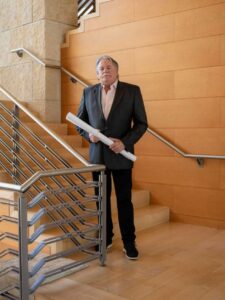April 22, 2019
Photo: Matthew Busch / Contributor, Contributor / For The San Antonio Express-News
In 1980, Darren Casey was president of his fraternity at Texas State University when the frat house burned down.
Flush with insurance money, Casey discovered the art of property flipping and the plump returns on investment that a roaring real estate market can deliver.
His fraternity got a new house, and the West Texas native — who as a teenager spent summers at what he called “Camp Oil Field,” working on drilling rigs — got his first intoxicating taste of dealmaking.
Casey, 59, settled in San Antonio soon after graduating, hustling commercial leases downtown. “I knocked on a lot of doors and became a pretty successful leasing agent,” he said. He saved his commissions and started his own company, Casey Development Ltd., in 1989.
His company has developed more than 4 million square feet of multifamily projects and commercial, industrial and office space, most of it in San Antonio, though he has projects up and down the Interstate 35 corridor between here and Austin.
In 2007, Casey completed one of the biggest commercial real estate deals in local history, selling a portfolio of 900,000 square feet of office and industry space valued at $114 million. And though his passion for real estate deals started on the streets of San Marcos, not in the classrooms of Texas State’s business school, Casey is a staunch supporter of the university. He talks it up whenever he has the chance, and he donated $1.3 million to Texas State in 2008. The university’s athletic administration complex is named for him.
Casey talked with the San Antonio Express-News at his company’s headquarters at 200 E. Basse Road, the former home of troubled radio giant iHeartMedia. How much did he pay for the property? “Not enough,” he said.
The following transcript was edited for length and clarity.
Q: What was it like growing up in Andrews, Texas?
A: Oh, it was heaven. Greatest high school in Texas, greatest town, greatest community. I remember one time my dad said he got a big promotion. And I said, “Dad, we can’t leave this — this is the greatest life ever.” I played several sports — we had a great golf team. We went to the state championships several years.
My father was my foundation of discipline and integrity, and he had the West Texas handshake. My mother was entrepreneurial and a salesman — she started a business. We always could be better, and Mom, to this day — both of my parents are in their 80s, and my mom’s still out there working.
Q: Does she still own a dress shop?
A: Well, she owned three — in Andrews, Odessa and Midland. I forgot which one they closed. She followed me and opened up one here. She’s where I got my entrepreneurial sales stuff.
My dad set a very moral foundation. If you say you’re gonna do something, you’re gonna do it. If the neighbor’s yard wasn’t mowed, you went and mowed it. You know? We didn’t go to camp. In high school, I stocked groceries at three in the morning, and on the weekends, I’d work on drilling rigs.
Q: Was that your dad’s doing?
A: No, it was just the way of life out there. Everybody in West Texas has a very strong work ethic and, you know, it’s small town. So when I went off to Texas State, it changed. I was like, “Oh, my gosh — there’s a world outside of going around the Dairy Queen every Friday night.”
Q: Your time at Texas State must have made a big impression on you. You’ve given a lot of money to the university.
A: Texas State truly changed my life — that and a couple of friends in my fraternity. That’s really where I got into the real estate business. Our fraternity house burned down, and I was the president. We took the insurance money and went out on I-35 — this was 1980 when the land flipping on 35 was going around. We took the insurance money, flipped it for a bunch of money, and I said, “Wow, this is kind of cool.”
Q: Did you wind up with a new fraternity house at some point?
A: Yeah. But, you know, that piqued my interest. I was getting a business degree, and that summer I was working offshore drilling rigs. But that’s when I decided I wanted to be in the real estate business and got my real estate broker’s license.
Q: Why offshore drilling rigs? Was it the money or the adventure?
A: It wasn’t the adventure. But it was an adventure, especially in Hurricane Allen. No, it was the money. My dad gave me an allowance and helped me pay for school, but between student loans and that, I wanted — there were things that I wanted, and the only way I could get them was work. … It was a hell of a lot of money working on offshore rigs, but it was —
Q: Also hurricanes.
A: It was scary.

